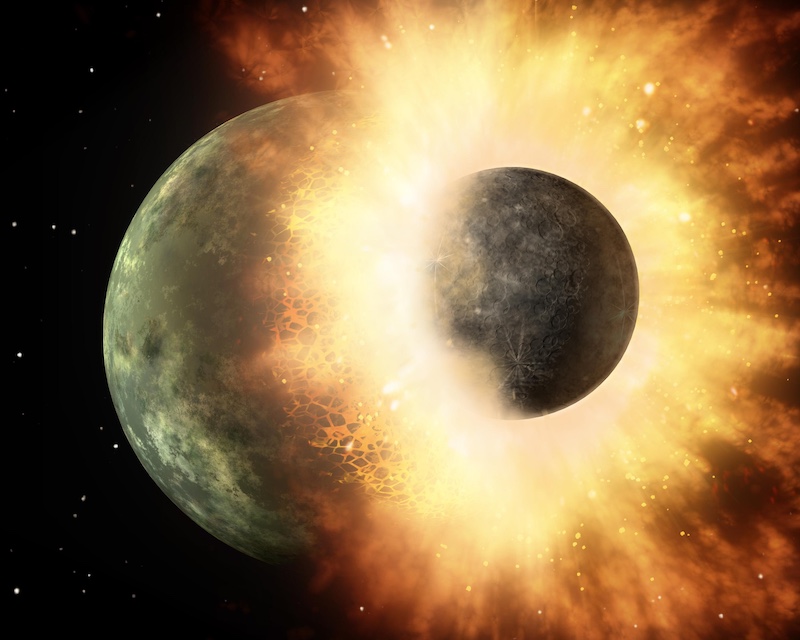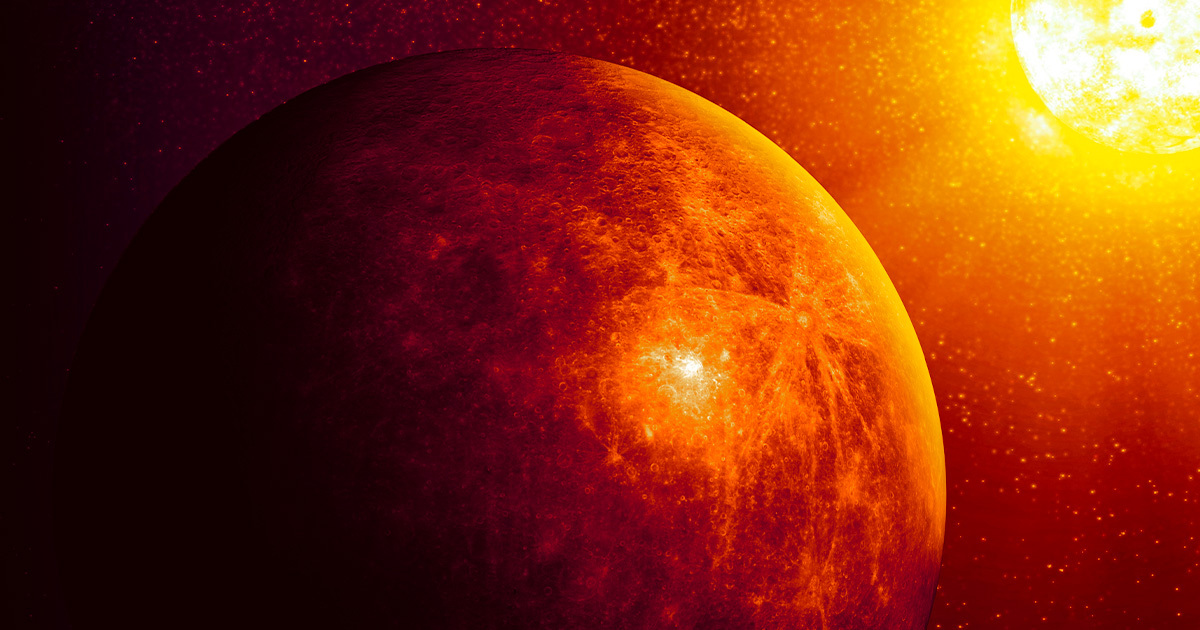
A grazing giant collision between two similar-sized rocky bodies likely created Mercury a few billion years ago.

On 8 January 2025, the ESA/JAXA BepiColombo mission flew past Mercury for the sixth time, successfully completing the final "gravity assist manoeuvre" needed to steer it into orbit around the planet in late 2026.

A new research suggests that underneath, the tiny world harbors a glittering interior fit to be the jewel in the crown of our Solar System.

So-called chorus waves have been recorded at Earth, and Jupiter, and Saturn; and observed at Uranus and Neptune. Now, international scientists have detected them whistling around Mercury.

Mercury has shrunk by7 km. Most of this happened long ago, but now we have evidence that it continues.

Data collected by the BepiColombo spacecraft traces the causes of the strange aurora, which course through the planet's weak magnetosphere.

Scientists are still preparing for the crucial fly-by of Earth by the joint European–Japanese BepiColombo mission to Mercury on 10 April, despite COVID-19 quarantine.

Mercury, the closest planet to the Sun, is one of the last places we think about when considering the potential for life in the solar system. New research suggests the planet's interior once contained the basic ingredients for life.

The planet’s extreme daytime heat combined with the super-cold (minus 200-degree Celsius) temperatures in the permanently shadowed craters might be acting like an “ice-making chemistry lab.”

Mercury is now the second rocky planet—after Earth—for which we have evidence of a solid inner core. It’s not an exact value, but the mere presence of a solid inner core helps to understand how the planet generates its magnetic field.

The project is only the second, after NASA’s MESSENGER mission, to attempt putting a spacecraft into orbit around the solar system’s innermost planet and is one of the most technically challenging missions.

A planetary scientist has used careful mathematical calculations to determine the density of Mercury's crust, which is thinner than anyone thought.
As our sun gets older, it's losing mass, and so its gravitational pull becomes weaker. As a result, the orbits of all the planets in our solar system are expanding.

Larger than the Grand Canyon, wider and deeper than East Africa’s Great Rift Valley, Mercury’s newly-discovered “Great Valley” boggles the imagination. But it’s more than size that makes this geologic feature remarkable.

NASA's MESSENGER mission has unveiled the first global digital elevation model (DEM) of Mercury, revealing in stunning detail the topography across the entire innermost planet and paving the way for scientists to fully characterize Mercury's geologic history.